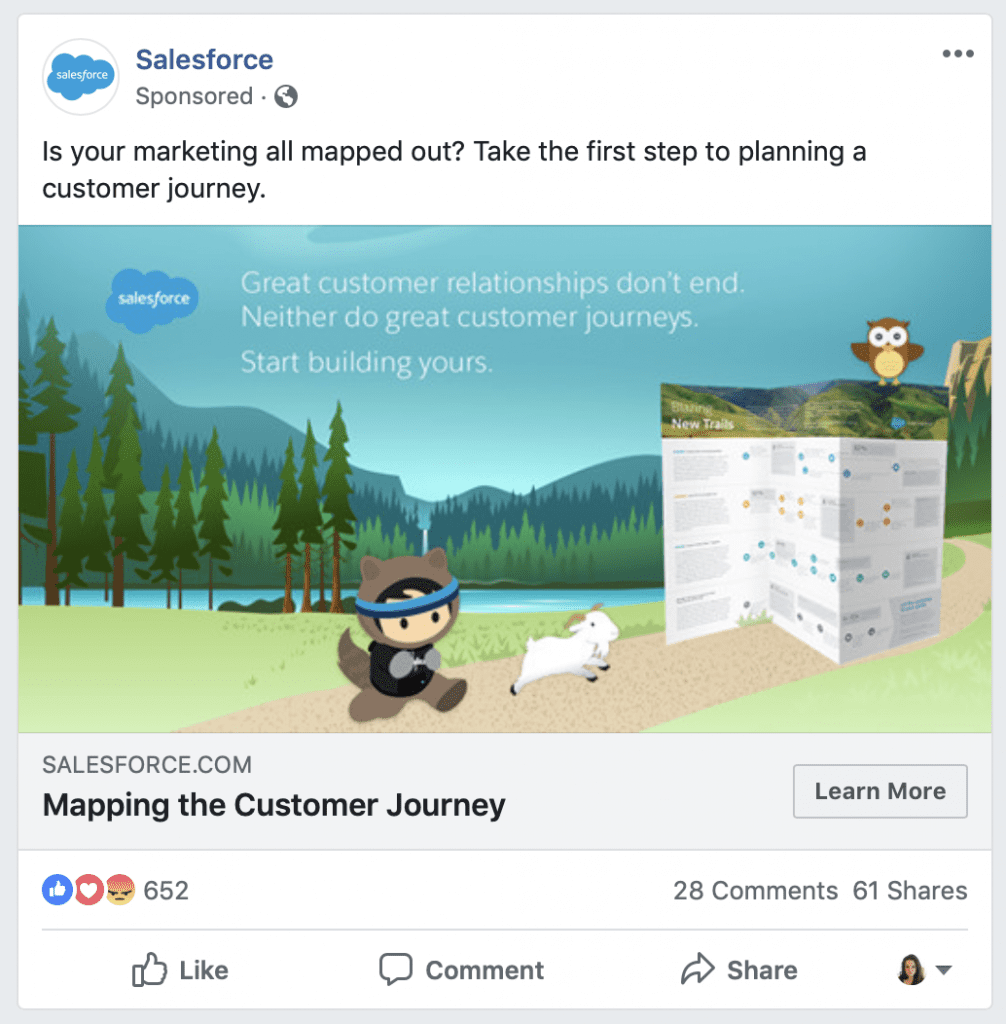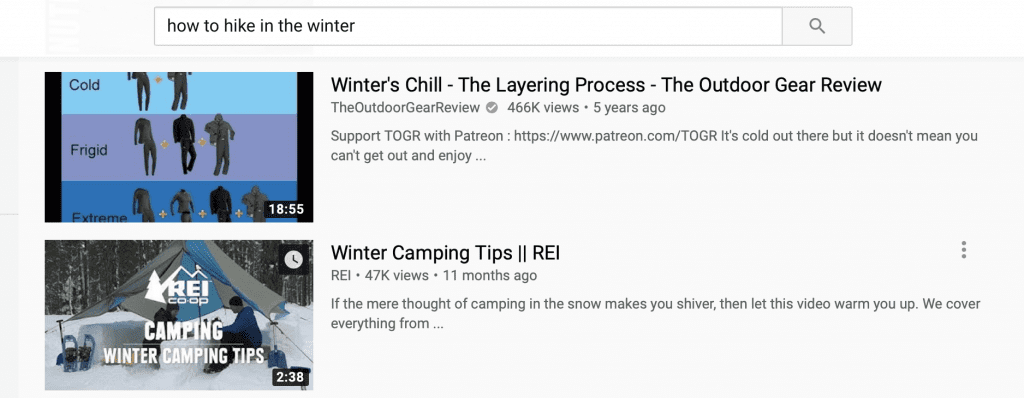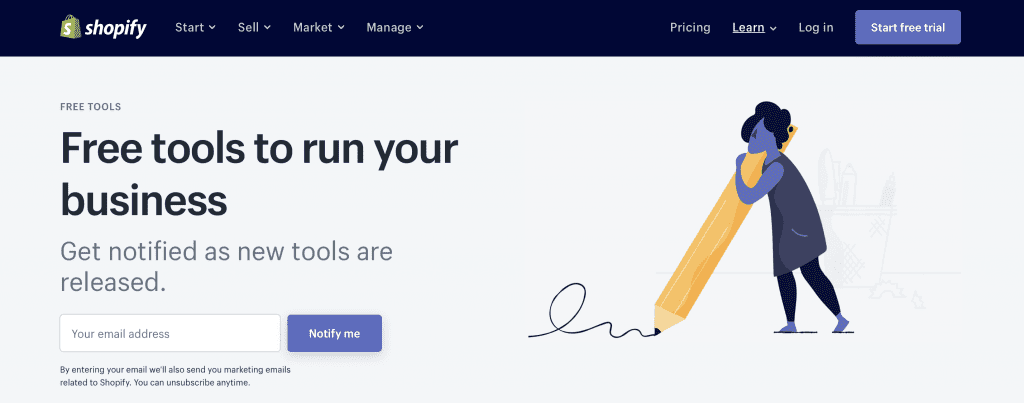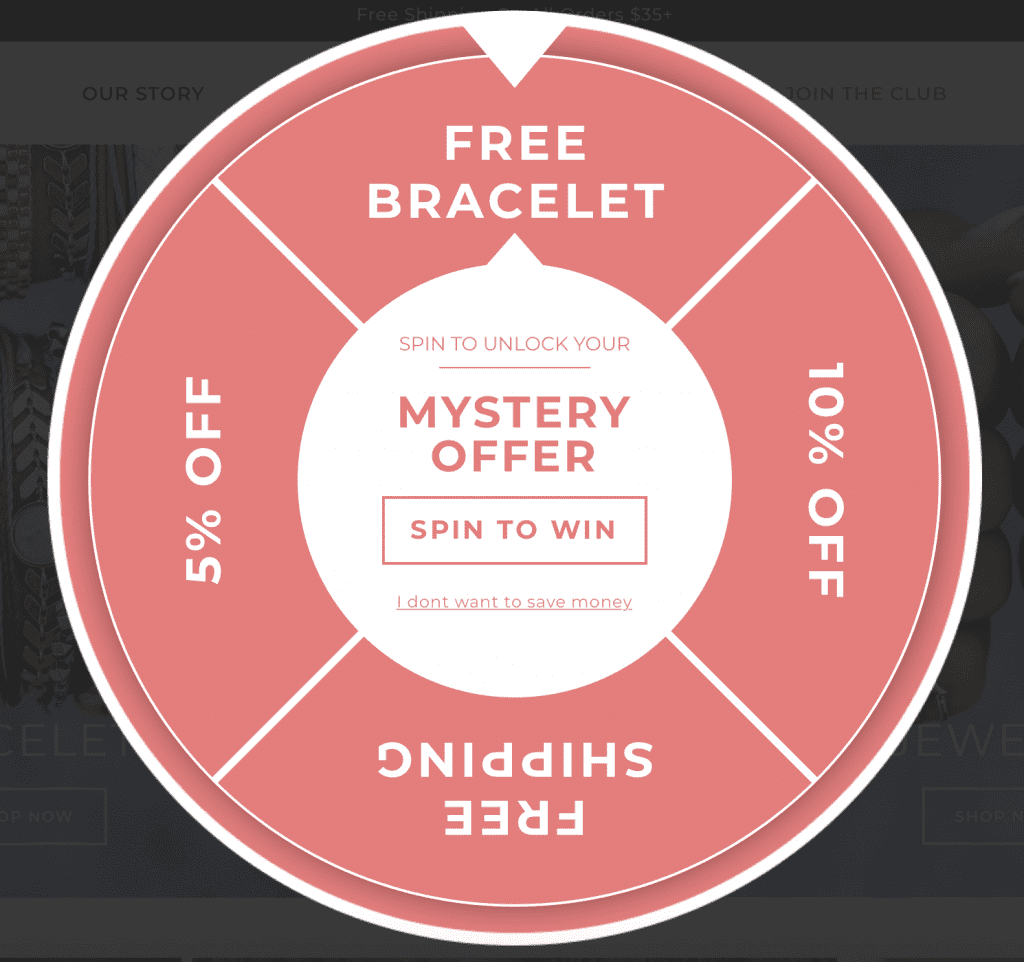[ad_1]
You’re not a cookie cutter company (even if you literally sell cookie cutters); therefore, there isn’t a cookie cutter digital marketing strategy.
What there is, though, is a general plan you can use to get your strategy off the ground. You’ll walk away from this article with a deeper understanding of digital marketing and a checklist of everything you want to dig into some more. Think of this as your starter course, one that includes guidance, examples and lots of breathing room for you to fill in the blanks.
Let’s go.
What is a Digital Marketing Strategy?
A digital marketing strategy is a detailed plan with all of the steps you’ll take to reach your goals. It will include your audience’s buyer personas; a variety of marketing channels; your goals and sales funnel; and measurement tools. Everything in your digital marketing strategy is going to support your goals. Often, a digital marketing strategy is made up of several digital marketing campaigns, which you can think of as the building blocks of your strategy.
For example, if your digital marketing strategy’s goal is to generate 25% more leads this year than last year, one of the campaigns within the strategy may be to share more high-performing blog content with your Twitter audience. Chances are you’d come up with a few different campaigns to reach that goal of 25% more leads this year.
Your campaigns should have specifics attached to them, just like your strategy does. In the example above, you would want to create a specific campaign goal, such as, “Increase re-Tweets with links to blog posts by 5% by the end of the month.” This gives you something specific to strive for and measure, and it still connects back to your strategy’s main goal.
Keeping Track of It
Before we continue, it’s important that you have a system for keeping track of your strategy. Your process can be simplistic for now, but you need to organize your ideas and plans somewhere. Here are a few tips:
- Choose a flexible process that you can scale as your strategy grows.
- Use a calendar or a tool that includes a timeline so you can plan three, six or 12 months ahead.
- If you’re working with a team, make sure the tool has collaboration features.
You can piece together tools that cover every aspect of your strategy – Google Calendar for scheduled plans, Dropbox for content storage, Slack for communication – or you can try to find one catch-all tool, like Asana or Trello, to handle all of it.
Buyer Personas
You can’t start marketing if you don’t know who you’re marketing to. Buyer personas represent your target customers. As much as possible, use data you’ve gathered through analytics, surveys and direct communication to form your buyer personas. You can also speak with your customer service reps, who have a front seat to your audience. However you design these personas, avoid guessing.
Be as detailed as you can. “Millennial female” is not enough. You have to create a buyer persona that’s more like this:
Free Spirit Zoe, early 30s, has opted for a life of travel over having a family and a mortgage. Earns an average income and doesn’t have an expensive lifestyle; spends money on experiences more than items and chooses budget-friendly destinations. Finds satisfaction through creative work and eats a clean diet most of the time with the occasional indulgence thrown in. Loves early mornings instead of late nights and spends as much time outside as possible.
Here are some things to include in a buyer persona. Analytics can be used for the first four, while the rest relies on more in-depth, psychographic knowledge of your audience:
- Age
- Location
- Job title
- Income
- Goals
- Priorities
- Interests
- Hobbies
- Challenges
Understanding who your buyer is will help you figure out where they are. Age can influence which social media platforms they use, job title may determine the blogs they’re reading and priorities will inform the devices they’re using.
Marketing Media Categories
There are three different kinds of media that you’ll use for marketing: owned, earned and paid. You’ll want to make a list of your marketing assets broken down by type. You can then rank them by how much impact they’ll have on your goal. Here’s an overview of each type of media:
Owned
You already own these assets and you have total control of them. Owned media includes:
- Your website and blog posts
- Additional content, like e-books and whitepapers
- Product descriptions
- Images or graphics you created
- Your social media profiles and content
Offsite content can be owned, too, such as blog posts you publish on LinkedIn or Medium. The best thing about owned media is that, because you’re in control of it all, you can fill in the gaps. What else does your audience want to know? What concerns do they have that haven’t been answered yet? Create content around those topics.
Earned
Earned media is the free recognition you get for what you’re doing. It can include:
- Invitations to write guest blog posts on other websites
- Media coverage you land through PR efforts
- Social media posts that are shared by your followers
- Social proof (like positive customer reviews)
- Word-of-mouth marketing
Earned media is a good barometer of how engaging your content is. Since you’re not forcing the exposure through something like paid advertising, earned media is spread around simply because others find it interesting or useful.
Paid
This is the media you’re spending money on to attract people. Examples include:
- Boosted Facebook posts
- Google Ads
- Retargeting ads
- Sponsored posts on websites
Spending money to promote your content doesn’t guarantee that it’ll perform well – you can still waste your advertising budget by running low-performing ads. Paid advertising works best if your owned content is intriguing to begin with and there’s a chance for the advertised content to turn into earned media.
There’s often cross-over between the media types. For example, if you write a blog post and publish it on Medium, that’s owned media. When people start sharing the blog post on Facebook, that’s earned media. If you decide to create a Facebook ad to get more traction out of the post, that’s paid media. If the ad encourages shares, that’s earned media again.
Content Creation
As you set goals and create campaigns for each step of your sales funnel (more on that in just a second), you’re going to be planning and creating all types of content. While content creation is a huge topic that can’t be tackled in full here, keep these three tips in mind:
- Create reusable templates that include the content title, format, goal and priority level.
- Keep a spreadsheet with each content piece’s budget and time estimates.
- Form your distribution plan so you know where the content will go.
We’ve written about content a lot. Check out this article with eight strategies to improve your content quality or this one with 20 blog content ideas for massive traffic.
The Digital Sales Funnel
We talked a little about goals at the beginning of the article, but let’s get into it some more. Your business goals will inform your marketing strategy goals, which will then inform your marketing campaign goals. If you look at it backward, your marketing campaigns are always going to be designed to reach your business goals. For example, if your business goal is to increase online revenue by 20% compared to last year, then your digital marketing strategy will need to generate 50% more leads through your website and each of your marketing campaigns will need to drive those leads.
There are all sorts of goals you can set – increase brand awareness and name recognition; collect more email subscribers; generate more sales; etc. Understanding the digital sales funnel will make it easier to see your touchpoints (your interactions with the customer), and from there you can decide what goals to set and how to reach them. To create and meet goals, you need to know which stage the customer you’re targeting is in. A person at the discovery stage needs different information than a person at the purchase stage.
Basically, a sales funnel contains the steps your audience members take from initially hearing about your business all the way to making a purchase and becoming a loyal customer:
Awareness, aka Discovery
This is when an individual – let’s call him Joe – hears about your brand, product or service for the very first time. This can happen when Joe sees an ad on Facebook, searches for a topic or product on Google, or watches an Instagram Story from a friend.
Engagement, aka Research
Joe knows a little about your brand and wants to explore further. During this stage, Joe may also check out your competitors. This is your opportunity to continue the relationship with Joe to see if you catch his interest more. You’ll want to entertain or inform Joe through the content you put out, which may be a blog post that solves a pressing problem, an invitation to a Facebook group or a YouTube explainer video.
Generate Leads, aka Subscribe
As Joe’s reading a blog post on your website, he sees a subscription form at the end with an offer for a free, downloadable guide that relates to what he was just reading about. He enters his email address and in a few seconds the guide is delivered to his inbox.
This step is crucial for businesses – it’s when you gather the potential customer’s information, giving you the ability to contact them again in the future. You’ll need to offer something valuable in exchange, like a free sample, a seat at a webinar or a custom product demo.
There’s a follow-up step here, too – you have to direct them to a “thank you” page and/or send them an email with what they’ll need, like directions for getting their freebie or a link to attend the webinar or demo.
Convert, aka Purchase
Joe makes his first purchase, converting him to a bona fide customer. For you, this step is less about profit than it is about getting a lead to commit to your business by investing time, money or both. It costs a lot of money to get a new customer. Even if they make a purchase, you’re not really profiting yet – the profits come later on. You don’t have to offer an inexpensive product, but some businesses will make the barrier to entry low to increase the chances of getting that first sale.
Source: Pura Vida Bracelets
Loyalty and Excitement
Joe has had a great experience with your brand, so he becomes a repeat customer. He may even spread positive word-of-mouth by talking to others about how much he loves your brand.
To encourage customer loyalty, smart brands will give the customer more than they paid for. For example, the Book of the Month Club will sometimes ship an unexpected freebie book along with the book you ordered. You can also send detailed instructions on how to use your product or put the customer on a VIP list where they’ll get highly valuable newsletters for loyal customers only. Even a stellar #unboxing experience can create excitement.
Ascension
Joe’s in – he loves your products, he tries almost everything new that you release and he’s always excited about upgrading his order with an add-on. Now you’re making a profit.
Measuring Your Goals
How will you know if you achieve your goals – or if you’re entirely off the mark – if you’re not tracking and analyzing your campaigns? There are a lot of data-driven options for goal measurement, from native tracking within the platforms you use to third-party tools like Google Analytics. First, see if the platform you’re using (Facebook, MailChimp, WordPress) already has robust analytics. If it doesn’t, you’ll want to look elsewhere for better tracking.
We’ve written a lot of articles about measurement, including this one about tracking user engagement with Google Analytics, this one about WordPress analytics tools and this one that covers must-track email marketing metrics.
Putting it All Together
Remember, this is just the framework you need to create your digital marketing strategy. It’s time to dig into the data to find out everything you can learn about your audience, segment and prioritize the various media types you have (and want to adopt), and turn the generic sales funnel we covered into one that reflects your specific business.
When you’re ready to take the next step, give our article about adding a press release to your marketing strategy a read.
[ad_2]
Source link




